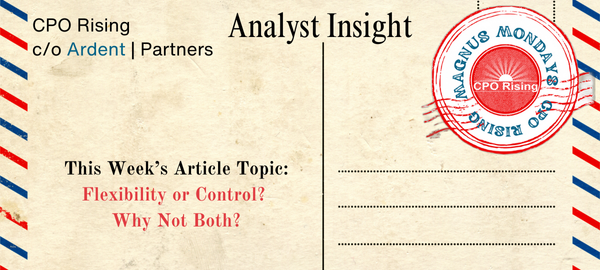For the last decade or so, the go-to solution for automating the Procure to Pay (P2P) process has been … wait for it … P2P suites.
The P2P process covers requisitioning, purchasing, receiving, paying, and accounting for goods and services. However, in most cases, this process is split between procurement, accounts payable (AP) and, in some cases, treasury. In more progressive organizations, AP is organized as a part of procurement because it often includes supplier interactions to clarify or correct invoice information. Matching invoices against pre-approved purchase orders (POs) also makes a case for viewing AP as part of procurement. Payments, however, seem to be more challenging as there are many ways of paying suppliers, ranging from checks to virtual cards to ACH or other forms of digital payment solutions.
But, more recently, the option to use intake management and procurement process orchestration (IM&PPO) solutions have been put forth as an option. So, since this has come up in recent discussions, I thought I’d discuss some differences between the two approaches and pros and cons for each.
P2P: Control but Rigidity
Traditional P2P suites are a combination of eProcurement and AP invoice automation solutions. The eProcurement solution supports the requisition and PO creation process, and in most cases includes catalog management capabilities. The AP solution on the other hand manages the invoice approval process and ideally supports eInvoicing. An increasing number of P2P solutions also added different payment capabilities over the last couple of years. But all P2P solutions are not the same. Most originate in eProcurement and these solutions sometimes have limitations in AP, eInvoicing, and payment capabilities. The ones that have their origin in AP sometimes have weaker procurement capabilities. So, make sure you know your requirements and use cases if you are evaluating P2P solutions to make sure they are supported.
The strengths of P2P are typically centered around tightly integrated support for the whole P2P process and a certain level of maturity of the solutions (even if this maturity can vary slightly across the suite depending on origin). P2P solutions also build in high levels of controls by supporting pre-negotiated catalogs for supplier approved products and services.
The main problem of P2P solutions, however, is that they are built for more or less one single process that starts with a requisition and ends with a received invoice. This requires that the good or service is either in catalog or the buyer needs to know enough about the supplier and product to create a free text order. The solution could potentially trigger a sourcing request and notify the procurement department, but it does not support further collaboration within the tool between requester and procurement. Some P2P solutions have a bit more collaboration capabilities, but this use case would need to be specifically configured.
While self-service configurations and workflow design is something that P2P solution providers have been working on recently, it still remains a work in progress for most and P2P solutions can, in general, be viewed as fairly rigid, requiring support from either the solution provider or a solution integrator.
So, in short, P2P solutions can work really well if properly implemented but only for part of your spend.
IM&PPO: Flexible but Not Sufficient (on It’s Own)
We’ve written extensively about IM&PPO this year, so I won’t go into definitions and so on (if you want that you can find it here). The important thing, if considering IM&PPO for P2P purposes, is that it doesn’t support the full P2P process on it’s own.
The key strengths of IM&PPO are the end user focus, ability to model any type of workflow, and integrate with the systems needed to execute the transaction. This means that IM&PPO can support any type of spend, but it needs these other systems to execute the transaction (or whatever action is needed to fulfil the request). You still need the P2P system or an ERP/financial system with PO capabilities to execute the PO and manage the invoice and payment processes.
IM&PPO solutions also lack catalog management capabilities, one of the core eProcurement functionalities. This can be partly addressed by integrating to punch-out catalogs and/or marketplaces like Amazon Business or Unite. For some organizations, this might be good enough but not for those organizations that want to negotiate directly with suppliers and have full control over what articles or services that are bought from which suppliers.
So, IM&PPO, with the support of a solution with basic PO capabilities, can in less complex and demanding cases, work as an alternative to P2P. However, for most organizations, it makes more sense to layer IM&PPO on top of P2P and whatever other procurement systems that are needed.
The Convergence
All this said, the P2P/S2P solution providers, like Ivalua, GEP, and SAP, are adding, or have recently added, IM&PPO capabilities to their suites. Coupa is relying on existing capabilities but are layering an AI agent on top of it. Whether or not they can compete with the newer specialized IM&PPO providers when it comes to self-service low-code/no-code configuration and integration, remains to be seen. On the other hand, the biggest IM&PPO provider, Zip, has already added PO and AP capabilities to their solution to make it more competitive in P2P scenarios.
So, the convergence has begun, which makes a lot of sense, since you need both the flexibility and user focus of IM&PPO combined with the execution capabilities of P2P. Where your focus should be depends on factors such as key spend categories, organizational maturity, and culture as well as an existing IT landscape.
If you want to know more, don’t hesitate to contact us at Ardent Partners.


